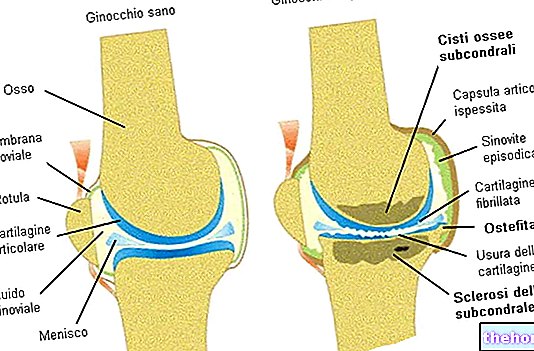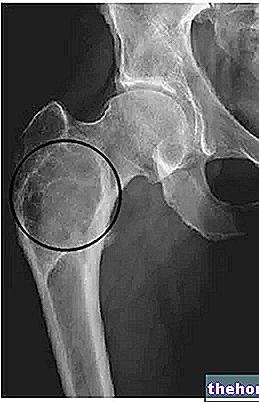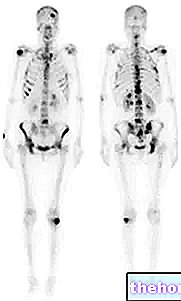
Spondylodiscitis causes inflammation and deterioration of the components of the spinal column involved.
Spondylodiscitis is mainly due to bacteria (in particular, gram-positive and gram-negative pyogens are reported, and Mycobacterium tuberculosis); however, it can also be the consequence of fungal or parasitic contamination.
The most symptoms of spondylodiscitis are: fever, back pain and stiffness, neurological deficits, epidural abscess formation and spinal deformity.
Spondylodiscitis is a condition for which numerous investigations are needed, including a vertebral disc biopsy.
Currently, those who develop spondylodiscitis can count on both conservative treatment (first-line therapy) and surgical treatment (therapy adopted in case of failure of the conservative approach).
Brief of what the Vertebrae and Intervertebral Discs are
- The vertebrae are the 33-34 irregular bones which, stacked on top of each other, make up the vertebral column (or rachis), that is the supporting axis of the human body and the seat of the spinal cord (which, with the brain, composes the central nervous system).
The vertebrae look different, depending on the section of the vertebral column considered; in general, however, in each of them it is always possible to identify 3 common portions: the vertebral body, the vertebral arch and the vertebral hole; - The intervertebral discs are the circular structures of fibrocartilage, which separate the individual vertebrae from each other; an intervertebral disc, therefore, is the element of separation between two adjacent vertebrae.
Thanks to the gelatinous substance contained within them - the so-called nucleus pulposus - the intervertebral discs act as a sort of shock-absorbing pads; their task, in fact, is to absorb the shocks and loads that weigh on the spine.
Spondylodiscitis is an inflammatory condition (inflammation is the result of infection), which causes the deterioration of the vertebrae and intervertebral discs involved.
Spondylodiscitis is a "disease that can affect any segment of the spine; however, statistics have shown that, in 60-70% of cases, it affects the lumbar spine (therefore lumbar vertebrae and lumbar intervertebral discs).
its less common causes.
Before going into the details of the causes of spondylodiscitis, it should be noted that the infectious agents responsible for the condition in question vary according to factors, such as:
- The mode of contamination;
- The geographical area;
- The age of the patient;
- Risk factors (see dedicated section).
Bacteria that cause Spondylodiscitis

In the Western World, the bacteria most associated with spondylodiscitis are gram-positive and gram-negative pyogenic bacteria; more specifically, in industrialized countries, the bacteria responsible for most cases of spondylodiscitis are:
- Staphylococcus aureus (or Staphylococcus aureus);
- Streptococcus (or Streptococcus);
- Staphylococcus coagulase-negative (or coagulase-negative staphylococcus);
- Escherichia coli;
- Pseudomonas;
- Enterococcus (or Enterococcus).
In developing countries, on the other hand, bacterial spondylodiscitis is mostly due to Mycobacterium tuberculosis - the bacterium responsible for tuberculosis - and the bacterium Brucella - the causative agent of brucellosis.
Did you know that ...
Involved in at least 50% of clinical cases, it Staphylococcus aureus represents the main bacterial cause of spondylodiscitis in the industrialized world.
Fungi that cause Spondylodiscite
Among the fungi potentially capable of causing spondylodiscitis, they deserve a mention Candida albicans And Aspergillus.
Parasites that cause Spondylodiscitis
Spondylodiscitis due to parasites is a very rare occurrence.
Among the parasites capable of causing spondylodiscitis, they deserve a mention Echinococcus granulosus (the causative agent of hydatidosis or Echinococcal disease) e Toxoplasma gondii (the infectious agent responsible for toxoplasmosis).
Risk Factors of Spondylodiscitis
Spondylodiscitis is more likely to arise in the presence of: immunosuppression, diabetes mellitus, obesity, cardiovascular disease, hypertension, drug use, cortisone drug abuse, advanced age, kidney failure, liver failure, recent history of surgery. spine, urinary tract infections, endocarditis, cancer and rheumatic diseases.
Methods of Contamination of Spondylodiscite
Spondylodiscitis can be the result of blood contamination (60-80% of clinical cases), contamination by direct inoculation (approximately 15% of clinical cases) and contiguity contamination (approximately 13% of clinical cases).
Epidemiology
Statistical research shows that:
- In the Western World, spondylodiscitis has an "incidence equal to 2.4 individuals per 100,000 people, therefore it is quite rare;
- Spondylodiscitis mostly affects individuals over the age of 50 and, although not with the same frequency as the latter, individuals between 10 and 20 years of age;
- Spondylodiscitis is 3 times more common in men than in women.

- Motor and / or sensory neurological deficits resulting from compression of the spinal cord or spinal nerve roots (radiculopathy). Some examples of possible neurological deficits related to spondylodiscitis are: feeling of weakness in the legs, paraplegia or quadriplegia of the limbs and loss of control of the anal or bladder sphincter;
- Spinal deformity (eg: increased kyphosis);
- Formation of an epidural abscess. The epidural abscess is responsible, in turn, for symptoms, which vary according to the site of formation; for example, a cervical epidural abscess causes stiff neck, cervical stiffness and dysphagia, while a lumbar epidural abscess involves the "onset of the so-called cauda equina syndrome.
It is important to point out that the severity of a spondylodiscitis does not always correspond to the severity of the present symptomatological picture; in practical terms, this means that it may happen to come across mild spondylodiscs characterized by severe symptoms and severe spondylodiscs characterized by a few disorders.
Other symptoms
Sometimes, to the symptoms listed above, spondylodiscitis can add further ailments, such as: weight loss, asthenia, hip pain, abdominal pain and alteration of the normal lumbar lordosis.
Complications of Spondylodiscitis
If severe or not treated properly and promptly, spondylodiscitis can, at first, cause extensive deterioration of the vertebrae and intervertebral discs involved, and, subsequently, lead to vertebral osteomyelitis.
Vertebral osteomyelitis is the infection of the bone tissue of the vertebrae and the medullary cavity, ie the space in which the bone marrow is contained; this possible complication of spondylodiscitis is a very serious medical condition, which, in the absence of treatment, can lead to permanent neurological deficits and, in some cases, even cause death.
The PCR assay is a valid test, but not sufficient to diagnose a condition such as spondylodiscitis;
Also known as disc-vertebral biopsy, this type of biopsy is essential to confirm the diagnosis of spondylodiscitis and to accurately establish, through a microbiological examination, the pathogen at the origin of the condition.
In order to hopefully treat spondylodiscitis appropriately and avoid complications, it is crucial that the diagnosis of the condition is timely, early.
, since in most cases the cause of the condition is a bacterium; however, if the causal factor is another, antifungals (fungal spondylodiscitis) or pesticides (Echinococcal spondylodiscitis) may also be used;Numerous medical studies have shown that conservative therapy of spondylodiscitis is all the more effective, the more timely it is (ie when the condition is in its onset phase or in any case not in an advanced phase).
To appreciate the effects of conservative treatment, the person with spondylodiscitis must undergo periodic vertebral disc biopsies.
To benefit from the effects of conservative therapy, the patient with spondylodiscitis may have to wait 4 to 6 weeks; if after this period of time there has been no improvement in symptoms, the treating physician is required to resort to surgical therapy.
What is the mode of administration of the drugs?
Typically, spondylodiscitis drugs are given intravenously.
Surgical Therapy of Spondylodiscitis: what does it consist of?

As a rule, the surgical treatment of spondylodiscitis involves three steps:
- The so-called debridement, ie the removal of the bone and disc tissues affected by the inflammation and therefore deteriorated;
- The decompression of the nervous structures possibly involved in the inflammatory state;
- Spinal fusion, ie the operation of joining two or more vertebrae together (clearly, the vertebrae subject to spinal fusion are those affected by spondylodiscitis).
Currently, to perform the 3 aforementioned operations, the surgical techniques are more than one; the choice of one technique to the detriment of the others is not random, but depends on the site of the spondylodiscitis and on the possible presence of other problems (eg: epidural abscess , deformity of the spine, etc.).
In some circumstances, doctors may deem it useful to associate surgical therapy with pharmacological therapy, based on the administration of medicines capable of eliminating the infecting pathogen.
Spondylodiscitis in Children: what is the most suitable therapy?
In children with spondylodiscitis, the only therapeutic approach that can be adopted is the conservative one (therefore, drugs and immobilization of the spinal tract affected by the infection)




























